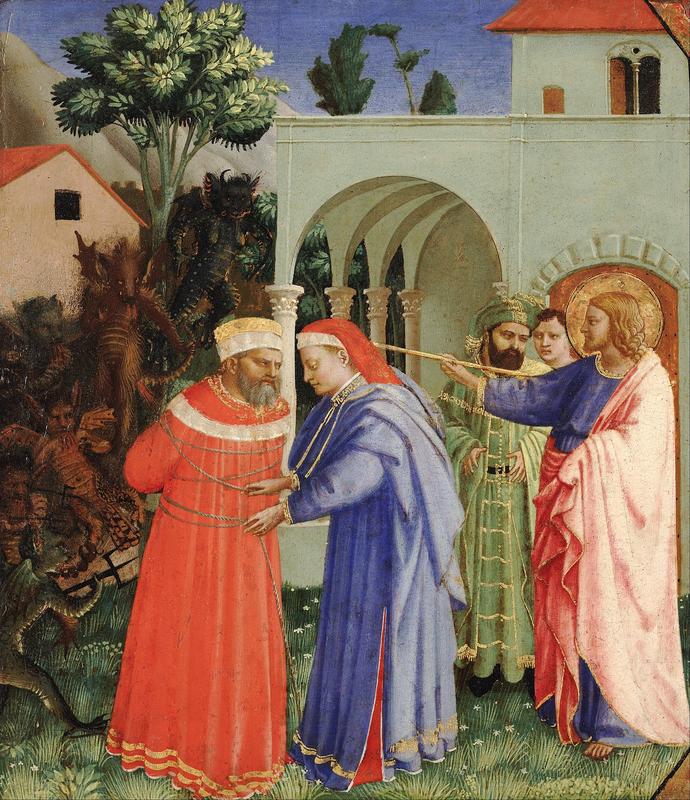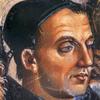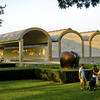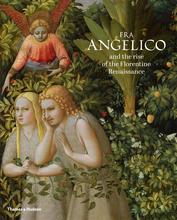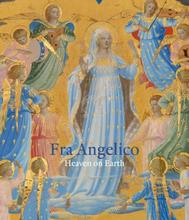More about The Apostle Saint James the Greater Freeing the Magician Hermogenes
- All
- Info
- Shop

Contributor
Nearly six hundred years ago, the young monk Fra Giovanni (who didn't have the name Angelico in his lifetime) couldn't have imagined that his spectacular work, The Apostle Saint James the Greater Freeing the Magician Hermogenes, would be presented by a secular institution to the general public.
He also may never have thought that someone would take a saw and split it off from its four sibling scenes, the five of whom served as a predella supporting the upper part of a church altarpiece. We don't know where this church was, or why someone split the predella into five easy pieces, but, by today's entrepreneurial logic, it would have been a good way to capitalize on an investment: chopping one work into several and selling them as separate original works. If ya can't beat 'em, join 'em, and if ya can't sell 'em joined, break 'em up into five pieces. One scholar suggests that someone dissembled the predella around the time that the Kimbell Museum presumes it was in the hands of Ignazio Hugford, a painter and restorer in Firenze, so maybe he's the one who chopped the predella up. But, the Kimbell doesn't know where this work was, or if it was already in its abbreviated form, for the first few centuries of its life. The anonymous chopper also made an effort to restore the damaged pieces by adding a one-centimeter strip of wood at the top of each piece., with painting on it to simulate Angelico's work. Good as new, right? Napoleon's baby bro, who you know as Lucien "Lil Lucky" Bonaparte, once sold it in London, on his second try, for only £24.30.
X-radiographs demonstrate that this was the leftmost scene in the five-scene predella, and the green building on the right side of the image was originally intact, shared with The Naming of St. John the Baptist. To the right of that one you would have seen, if you were in Europe five hundred years ago, The Burial of the Virgin and the Reception of Her Soul in Heaven, the missing panel, and The Meeting of Saints Dominic and Francis of Assisi. The predella didn't mean to suggest that all these events were happening at once, or even chronologically left to right—it was more of a refresher course on the bible, accessible to people who may not have been able to read.
This panel is based on the 700-year-old Legenda sanctorum, a story collection by Jacobus de Voragine, which would have been a classic bestseller in Angelico's time. There are tons of copies still existing, and lots of people copied it by hand in those days. The earliest existing version is signed by the copyist, "a synnful wrecche" (a sinful wretch), which is a bit harsh. That copyist could've used a good self-help book.
Sources
- Hamer, Richard. The Golden Legend: Selections. New York: Penguin, 1998.
- Kanter, Laurence B., et al. Painting and Illumination in Early Renaissance Florence, 1300-1450. New York: Metropolitan Museum of Art, 1994.
- "Provenance." Kimbell Art Museum, https://www.kimbellart.org/collection/ap-198603.
- de Voragine, Jacobus. The Golden Legend: Readings on the Saints, Volume 2. Princeton: Princeton University Press, 1995.

